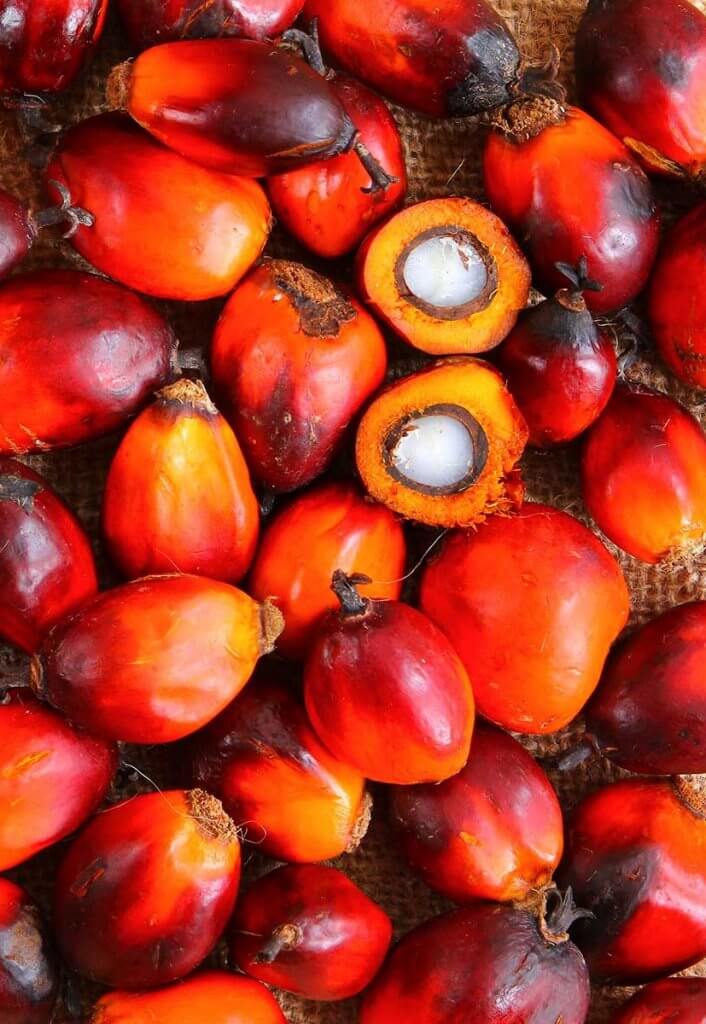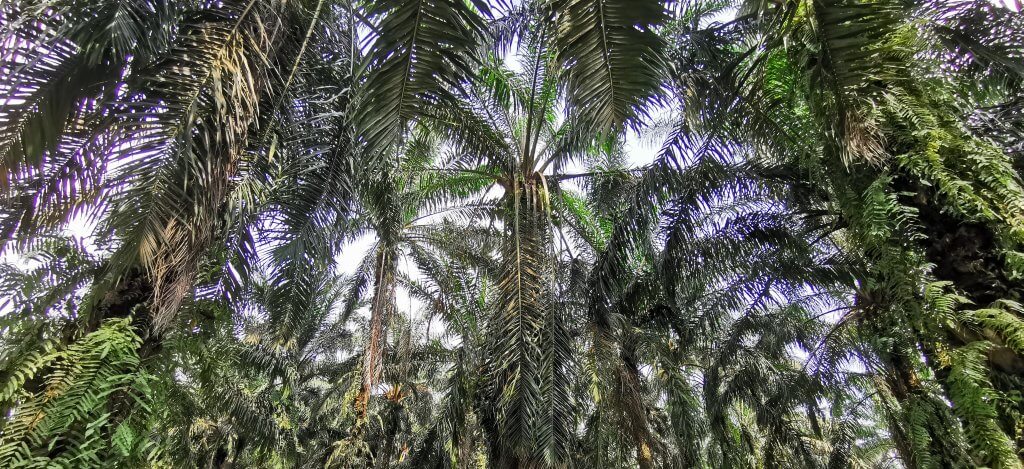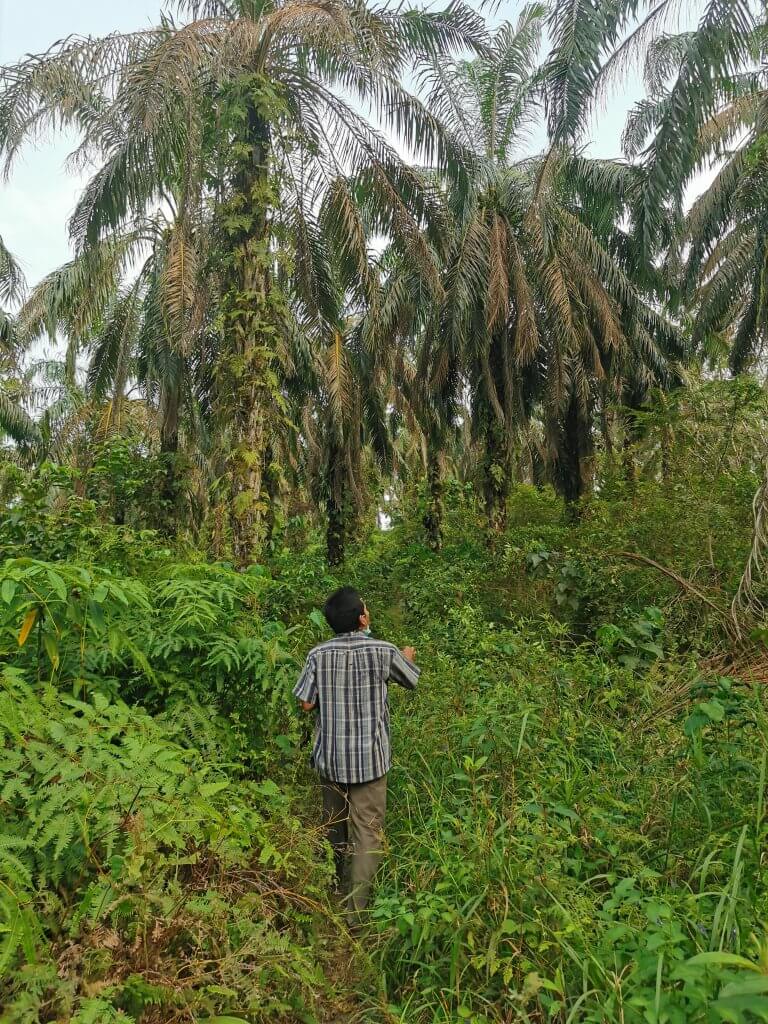Palm oil is nearly everywhere. From food to cosmetics, cleaning products and even biofuel, palm oil is prized for its versatility. And the industry is booming: in the past 50 years, the world production has increased by more than 35 times [1]. Palm oil is also an important source of income to millions of smallholder farmers, particularly in Indonesia and Malaysia where 84% of the world supply comes from. Today, about half the people in the world rely on palm oil as part of their diets, especially in Africa and Asia.
But palm oil is also known for being highly controversial. Growing only in the tropics, in areas rich in biodiversity, intensive production models have been a major driver of deforestation and biodiversity loss since the 1980s. The palm oil industry needs to go through a deep and urgent transformation to produce more sustainably, as the international market demand continues to grow.
What makes palm oil so successful? What is its real impact on deforestation? And what are the ways forward for the palm oil industry? Let’s have a closer look.
Palm oil production is booming to meet fast-growing demand for vegetable oils
Over the past 50 years, palm oil production has increased rapidly. In 1970, the world was producing only 2 million tons, versus 71 million tons in 2018. The market demand is predicted to keep growing by 1.7 per year until 2050 [2]. The story of palm oil seems to be less about an isolated commodity, than a global rising demand for vegetable oils. The production of soybean, rapeseed, or sunflower have also increased continuously in the past few decades.
But what makes palm oil stand out is its high productivity and relatively low production costs. Compared to other vegetable oils, it is a very productive crop. Palm trees produce fruit twice a month and all-year round. In total, palm oil produces 36% of the world’s oil (as of 2018) but uses just 6% of croplands devoted to oil production. It has therefore been a natural choice for the industry to meet this demand.
A highly versatile crop used for food, cosmetics, biofuel industries
Palm oil is used in a wide range of products across the world. Over 68% is used in food products you can find in a supermarket: from margarine to chocolate spreads, from pizzas to biscuits or cooking oils… the list is long. 27% is also used in industrial applications and consumer cleaning products (soaps, detergents, cleaning agents), but also cosmetics. In some parts of the world, palm oil is used in bioenergy: 5% of the world production is used as biofuels for transport, electricity, or heat.
You’ve guessed it right: what makes palm oil particularly successful compared to other crops is its versatility. It naturally has highly diversified properties and functions which makes it widely used. At room temperature, palm oil is semi-solid (so it can keep consumers’ favorite spreads spreadable), it is resistant to oxidation and therefore can give products a longer life, it is stable at high temperatures and so gives fried products a crispy and crunchy texture. Palm oil is also odorless and colorless: it doesn’t alter the look or smell of food.
Indonesia accounts for 57% of the world palm oil production
Oil palm is a tropical plant species, native to central Africa, but arrived in South-East Asia around 100 years ago. Small amounts of palm oil are grown in many countries around the world, but the global market is dominated by only two: in 2018, Indonesia accounted for 57% of the total world palm oil production while Malaysia produced 27%. After India (9.2 million tons of palm oil imported) and China (5.3 million tons) the European Union is the third largest importer. It is followed by the United States (1.4 million tons imported in 2017).
But the food and medicinal use of palm oil dates back at 5,000 years ago (at least), as it was evidenced by archaeological excavations in Egypt. Palm oil trees probably originated in the tropical rainforests of West Africa, where they were exploited locally before being introduced to Egypt by Arab traders and to Brazil by Portuguese settlers in the fifteenth century.
What is the impact of palm oil on deforestation?
The rapid global market demand has led to increased amount of land devoted to growing palm trees. Over the last 50 years, this has been a major driver of deforestation. Since 1980 the amount of land used at global level has more than quadrupled, from 4 million to 19 million hectares in 2018. This might sound like a lot of land. But in fact, it is interesting to note that the world devotes more than 300 million hectares for vegetable oils. It accounts for 6% of this land use, which is small when we consider that it produces 36% of the oil. In Indonesia, there was a peak of deforestation in 2008–2009, when it reached almost 40%, but it has declined to less than 15% since then.
Would switching to alternative oils be the solution to stop deforestation?
As a reminder, palm oil is known for being a highly efficient crop. To get the same amount of oil from alternative ones, such as soybean or coconut, we would need between 4 and 10 times more land. We might wonder how would this impact deforestation even more, as it would mean more land to produce an equivalent amount of oil to meet the market’s demand. In the meanwhile, it seems the alternative is to help the industry drive the transition to sustainable sourcing, while embarking those whose livelihoods strongly depend on palm oil: smallholders.
Paving the way to sustainable palm oil: successes and limits of the RSPO
Among the initiatives put in place to drive this transition, the Roundtable of Sustainable Palm Oil (RSPO) [3] is the largest, independent, third-party standard for more sustainable palm oil sourcing. Formed in 2004, the RSPO has a production standard that sets best practices producing and sourcing palm oil. The certifications delivered by RSPO are done at plot level: it testifies that the palm oil has been produced under sustainable standards, in deforestation-free areas. In parallel, other initiatives have emerged on the brands’ side which drive sustainable and transparent supply chain programmes.
But this well-intentioned RSPO movement is confronted with a significant limit today. As the certification process is quite costly and complex, most plantations which manage to get RSPO-certified are large plantations, not smallholders.
Why are smallholders still mainly left aside of the transition?
Smallholders represent a big share of the world’s palm oil production. In Indonesia, they manage more than 40% of all plantations and independent smallholders own more than 3.1 million hectares of plots. The installation of smallholder palm oil producers on palm plots has often been encouraged by public authorities in the past. Very often, this has contributed to lift them out of poverty.
The considerable economic and social impacts of palm oil production largely explain the difficulty of governments in emerging countries to implement strong environmental policies. But the growing concern on biodiversity loss is a fundamental movement that is forcing governments to align declarations with concrete actions.
Another category of smallholders known in the industry as “plasma smallholders” work in a different framework: they have an exclusive supply agreement with a mill, receive technical assistance and can access agricultural inputs such as seed stocks and fertilizers thanks to their partnership scheme with the mill. They are more likely to meet RSPO sustainability standards than independent smallholders.
Plus, researchers predict that independent smallholders will double their production capacity to reach a 60% share of Indonesia’s total oil palm plantation area by 2030. As palm oil remain their main source of income, there is an urgent need to help them reduce their negative environmental impacts but also increase yields and access more diversified livelihoods opportunities. This requires a transformation effort from the whole industry with an accompaniment from the government, institutions but also the private sector which needs to source more sustainably.
This is exactly the challenges that Livelihoods project tends to answer.
- [1] Source: FAO & Our World in Data https://ourworldindata.org/palm-oil
- [2] IUCN: https://www.iucn.org/resources/issues-briefs/palm-oil-and-biodiversity#issue
- [3] Learn more about the RSPO and its certification programme







